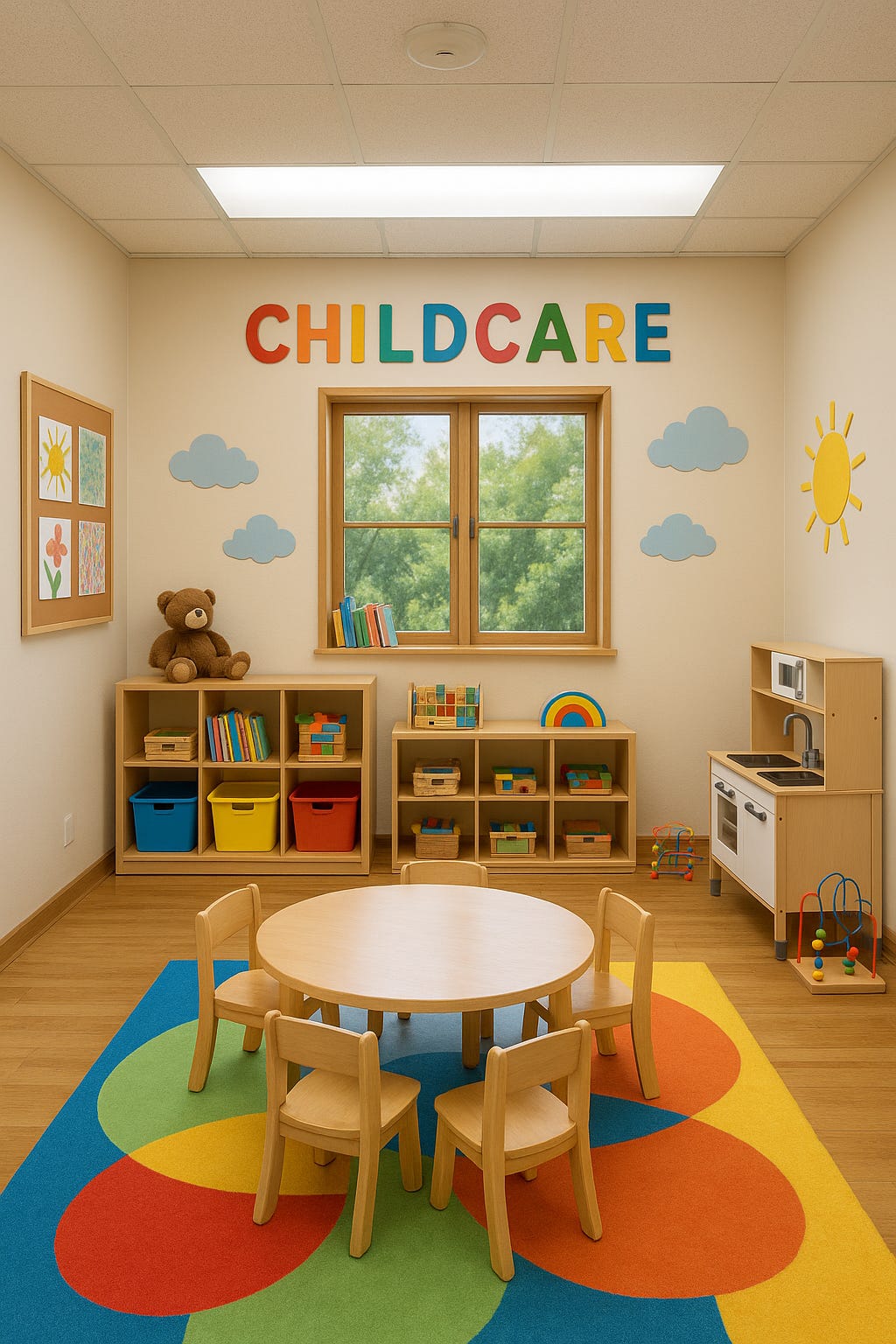Above image created with ChatGPT.
The high cost of childcare hits home for me with my two teenage sons. A little over ten years ago my wife Nelly and I made the difficult decision that she would give up her career and stay at home with the kids. Although we both felt strongly that we were best equipped to care for our children, economic necessity made the choice much easier.
When my boys were preschoolers, the average monthly cost for childcare was nearly $800 per child in Pennsylvania. Today, that figure is closer to $1,000 per month and oftentimes more pending on the location in the state and the age of the child.
Last year, a great new working paper by Anna Claire Flowers, Vincent Geloso, Clara Piano, and Lyman Stone caught my eye. The authors used data collected from existing work to create a new index of childcare regulation by state. The index was not the main component of the paper— it was an analytical tool to better understand how tougher regulation might interplay with a state’s fertility gap. In other words, are parents able to achieve their expected number of children? The authors find some evidence that lower levels of regulation are associated with lower fertility gaps.
I felt that the index would be a powerful tool for states to better understand their regulatory environments. I asked the authors to publish their findings as a new report, focusing on and highlighting each state’s ranking in the childcare regulation index. Below is the main graphic from the report:
Source: https://csorwvu.com/childcare_regulation_index_1/
Interestingly, Pennsylvania is ranked as having one of the strictest set of regulations for childcare providers in the country, coming in as 48th nationally (with 50th being the most burdensome level of regulation).
Turning my attention to Wisconsin, the state is also ranked in the most burdensome quartile for childcare regulation. Flowers et al. ranked Wisconsin as 40th nationally. Working with my longtime and frequent coauthor Conor Norris and the excellent team of Miranda Spindt and Will Flanders of the Wisconsin Institute for Law & Liberty (WILL), we took a deeper dive into how childcare regulation stacks up in Wisconsin relative to surrounding states. The report was a joint publication of WILL and the Archbridge Institute.
Focusing on some specific regulations for childcare facilities, we found a couple of instances where Wisconsin is more onerous than neighboring states. The table below summarizes staff-to-child ratios for Wisconsin and surrounding states:
Source: https://will-law.org/wp-content/uploads/2025/05/WIChildcareStudy-web-1.pdf
For newborns to two-year old children, Wisconsin ratios are very similar to surrounding states. For younger two-year old children (2 to 2.5 years), however, Wisconsin regulations are often more burdensome. For this age group, Iowa and Minnesota are more flexible— allowing for a ratio of one staff member for every 7 children. Illinois offers the greatest degree of flexibility, permitting a ratio of one staff member for every 8 children.
It is important to note that these minimum staffing ratios are not ceilings. Facilities will still have the option of offering care with more rigid ratios. I believe that a market with no mandated staffing ratios would be the preferred solution— giving parents the flexibility to choose the right option. If parents had a strong desire for more rigid staffing ratios, they would have the option to choose such a provider. On the other hand, if the staffing ratio was less important to the parent, they could choose a provider with a more flexible option. The market would be a much better regulator than the state could ever hope to achieve.
Further, as we highlight in the report, existing research suggests that more rigid staffing ratios are not associated with higher quality. The ratios are associated with higher cost and fewer choices for parents, however. More recent research also shows that more rigid staffing ratios result in lower labor force participation for mothers of younger children. Taking all of the data and research together, we reached the informed conclusion that policymakers in Wisconsin should consider providing more flexibility to parents and childcare facilities— allowing 7 or 8 two-years old kids per every staff member as opposed to the current maximum of 6.
To provide further evidence to support our conclusion, we dug into records of complaints and serious injuries for Wisconsin and surrounding states. The below table provides a snapshot of what we found:
Source: https://will-law.org/wp-content/uploads/2025/05/WIChildcareStudy-web-1.pdf
It is important to note that the best apples-to-apples comparison are when we compare Wisconsin to Iowa and also when we compare injuries in Wisconsin to Michigan and Minnesota. Data in all of these cases was collected in 2022. Data with two **’s is from 2023 and data with three ***’s is from 2024.
Although we can’t say anything causal with this snapshot, there does not appear to be evidence that tougher regulation is associated with better childcare. Using the Flowers et al. index, Iowa is ranked as having the 11th most flexible regulatory environment for childcare centers— almost 30 spots higher than Wisconsin. Yet Iowa has far fewer complaints and injuries than Wisconsin. Wisconsin also has nearly 10-times more injuries than Illinois, even though Illinois has a much more flexible set of regulations for younger two-year old kids.
In putting together this report, it was enlightening to learn more about childcare regulations and how they compare across states. We identified several common sense recommendations for policymakers in Wisconsin to improve access to childcare without compromising quality. In the near future working with the Archbridge Institute, Conor Norris and I will be releasing new state-by-state data that we expect will be of great interest to policymakers. Stay tuned!







